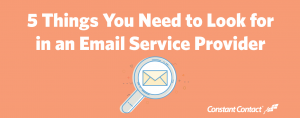In this fast-moving world, it’s time to rethink your B2B website, from the strategic to the tactical. Here’s what yours must have.
A company’s website is the single most important media channel in the marketing communications toolkit. Your website is the perfect “owned media,” infinitely flexible, with global reach and easy to keep current.
Just a few years ago, while teaching in Buenos Aires, I was taken aback when a grad student said, “We don’t visit company websites anymore. We get everything we need from social media.” Hmmm, am I an out-of-touch boomer? Maybe.
But on this topic, not. I stand by the old maxim, “If you don’t have a website, you don’t have a business.” And I am frequently surprised by how many B2B companies still neglect features and functionality that would improve the effectiveness of their sites.
When was your website built? How long since it was refreshed? In this fast-moving world, I propose a rethink for your website, from the strategic to the tactical. Let’s begin.
What are your objectives for the website?
As with any marketing investment, start with the end in mind. What is the purpose of your site? The answers to this question will guide your decision-making about the ideal features and functions.
B2B firms typically seek to accomplish some combination of the following with their sites:
- Be found by qualified prospects.
- Demonstrate expertise and trustworthiness.
- Stand out from the competition.
- Explain your products and services and how they solve business problems.
- Motivate interaction.
- Capture visitor data.
- Manage partner relationships.
- Provide customer service.
- Generate a lead.
- Sell, close.
What are your customers and prospects looking for?
Over the years, we have learned a lot about what business buyers need to make their purchase decisions. Specifically:
- Content relevant to their immediate need.
- Evidence of experience in their industry.
- Easy to navigate and find what they are looking for.
- Pricing details.
- Competitive information.
- Proof, like testimonials and case studies.
- No obstacles, like long web forms.
Notice the discrepancies
Notice how our goals sometimes misalign with the needs of our audiences. Pricing is a glaring example: It’s a rare B2B company that operates with fixed, public pricing. But clients thirst for at least a general sense of whether a vendor is likely to fit their budget.
Andy Crestodina and Ascend2 conducted some useful research into this matter in 2021. Among the interesting discrepancies they discovered? Visitors cared more than marketers about the site design but less about the need for a compelling brand story.
Website essentials for B2B marketing today
Here’s a list of the essential elements of a top-quality B2B website in today’s market. Check your site against this list. You may want to make some changes.
1: A clear message on the home page
Write headlines that explain what problems you solve. Stay away from buzzwords and brand speak. Explain your benefits and why visitors should care. It seems obvious, but you’d be surprised how many B2B sites don’t provide their value proposition on the home page.
2: Fast loading
Researchers simply won’t wait for page loads anymore. They’ll leave.
3: Educational content
Fill your site with useful, non-salesy information about your category and the problems your customers are looking to solve. This is a classic content marketing play whereby you provide libraries of case studies, research reports, presentations, archived webinars, blog posts, videos and all information intended to help visitors learn and present themselves as their trusted partner in that task.
Make it easy for the content to be found. Experiment with different organizational options and internal search engines. Continuously re-organize, based on visitor tracking data, to serve the needs of your top prospects based on their search behavior. Include testimonials, wherever possible, in connection with your content strategy.
4: Mobile optimization
More likely than not, your visitors are on a mobile device. Provide them with a satisfying experience.
Interactivity. The brochure-ware days are over. Make it easy for visitors to get in touch. Don’t bury your contact information at the bottom; bring it forward, ideally to the heading on every page.
Install a chatbot to answer real-time questions and gather visitor data. Back it up by a human, if appropriate.
On the home page and elsewhere, add an offer, a call to action and a landing page with a data-capture form. If the offer is of sufficient interest, a small but steady percentage of visitors to your site will fill out the form and leave behind their contact information.
Treat that data as an inquiry and run it through your normal qualification and nurturing process. Add similar offers throughout your site, varying the deal to suit the surrounding content.
Install IP address identification software that lets you learn the domain name of business visitors to your site. You won’t know their actual names, but you will know the firms they represent.
You can do a look-up by hand or use automated processes from providers like NetFactor. Once you know which companies are researching information on your site, your team can reach out and offer to help.
5: Ecommerce
As younger people enter the buying group, buying behavior is changing — fast. These folks expect to do just about everything online and they want a speedy, intuitive experience and secure payment options.
Examine your customers’ buying processes and identify areas that can be automated. You may not be selling online end-to-end, but surely you can enable pieces of the journey, like quotes, purchase orders, contract pricing, channel partner support, order approvals, cross-sell and upsell, licensing, renewals, reactivation, winback, etc. There are more options than you may think.
Ecommerce is perfect for selling low-margin replacement parts, financing solutions and warranties. Ensure your technology supports multiple languages and currencies and complies with multi-country tax and privacy practices.
6: Community
Community is a hot topic in B2B today and worth considering. Buyers want to learn from their peers, so the more you can help them, the better off they — and you — will be.
Building or sponsoring a community pays off in myriad ways. Communities can be organized as small, invitation-only groups or big public forums. Their purpose can be peer-sharing, networking, education, support — the sky’s the limit.
7: Management and maintenance
For any sizable firm, website decision-making can be a huge headache. Is the headquarters in charge of website management worldwide? Is the site produced by marketing or corporate communications or sales? What about foreign divisions? These questions must be addressed clearly, at the outset.
When it comes to maintenance, regularly scheduled attention is essential. Calendar and assign responsibility to specific people. Make sure they review copy for needed updates or strategic changes.
Fix broken links. Survey constituents for their input. Monitor site traffic patterns and continuously use this data to improve content and navigation.
Marketers are getting the message
More B2B marketers plan to invest in their websites this year than in any other marketing activity, even more than retargeting, social media and email, according to the Benchmark Survey from Demand Gen Report — heartening news. So, let’s get going on this!
The post The 7 B2B website essentials: What customers want appeared first on MarTech.
MarTech(3)







